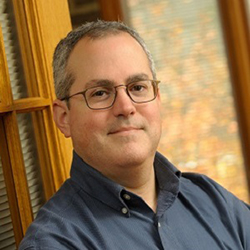Using Data Analytics To Benefit Health

Saying Dr. Henry Gabb is passionate about scholarship is an understatement. With a PhD in Molecular Genetics from the University of Alabama at Birmingham School of Medicine, a Master of Science in Health Informatics from Northwestern University School of Professional Studies and Feinberg School of Medicine, and a second PhD in Information Science in progress at the University of Illinois, Gabb is a seasoned academic and expert at refining big data to reach meaningful conclusions.
“Cleaning data is an interesting problem because it often requires a fair amount of skill and creativity,” said Gabb. “It’s not easy getting noisy and messy information from multiple sources and working it into a form where it’s actually useful for analytics.”
It’s a skill Gabb has both mastered and finds enjoyable. He credits his time at Northwestern for helping him learn the nuances of informatics. In particular, he was impressed with the accomplishments of his classmates and the level of peer discourse.
“I looked at other programs, but none stressed the level of aptitude of Northwestern,” said Gabb. “My classmates were already working professionals at the top of their fields. For a remote program, it was great to be in class with people I could learn from.”
“I learned a lot that I carried over to my doctoral work and professional career,” Gabb added.
Data analytics is critical to Gabb’s research at UIUC. Using informatics to estimate the extent to which everyday consumer products expose humans to certain chemicals, he was challenged with extracting useful information from vast amounts of data from multiple sources.
“I’m trying to prioritize chemical ingredients for toxicity screening and risk assessment, but an ingredient might have a dozen different names, so you first have to resolve the chemical synonymy. Then you have to check how often a chemical occurs in a collection of consumer products. Chemical retention has to be considered too. After that you have to pull in another dataset of consumer product usage patterns…it’s a lot of work to integrate that data, but then you can start estimating likely chemical exposure and retention.”
Much of Gabb’s research is already published and now he’ll be taking his information science abilities to Intel Corporation, where he previously worked before taking a hiatus to earn his doctorate.
